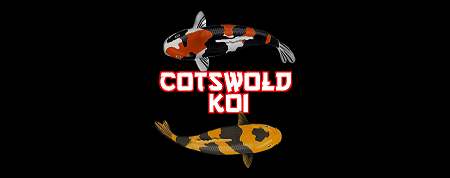Frequently Asked Questions On Koi Carp
How big do koi grow?
Koi carp can grow to 120cm in length, although any fish over 100cm is considered to be huge. Most koi don’t grow much over 60cm in length in the average garden pond and a number of different factors affect growth including genetics, water temperature, food, space and water quality.
If a Koi didn’t have large parents and isn’t fed the best Koi food in year-round warm water in a large enough pond it may never grow to a massive size. But if you go to a koi show and see a 90cm or even a 100cm Jumbo Koi you’ll be amazed at just how big they really can get.
What are koi worth?
Any koi is only worth what someone will be willing to pay for it but one Japanese show winning koi sold for £1.4 million pounds.
High quality Japanese koi worth over £20,000 have been purchased and imported to the UK but at that sort of money it is all about the bloodline, what the parents are like , shape, skin quality, the pattern, the colouration and variety and the breeder and the potential to be a Champion.
All show winners are mostly female as they grow bigger than males do and the most expensive fish are always one of three varieties including Kohaku, Sanke and Showa. Red and White Kohaku are the most desirable variety winning shows in the UK, Europe and Japan.
Ghost koi are crosses between koi carp and mirror carp and are rarely worth more than £100 regardless of there size. Just because a koi is big it may not be worth much either as value is related to the pattern, body shape and bloodline.
What do koi eat?
In the wild carp are omnivores, eating everything from worms and snails to mosquito larvae, plant matter and detritus. They eat from the top, middle and bottom of the water layers, slurping food from the surface or sifting muddy substrates for juicy morsels. Anglers will know Koi will eat anything from Sweet Corn to Spam, to maggots and even Boilies.
In captivity, Koi are fed floating food pellets almost exclusively. Different diets are available for different times of the year and water temperatures, with low protein Wheat Germ being fed in cold weather, and high protein growth and colour foods being fed in spring and summer months.
If you want great koi try to feed them the best quality you can afford. Good food has good ingredients and doesn’t come cheap. For maximum growth potential invest in an Automatic fish feeder to feed your koi several times a thorough out day when you’re not there to hand feed.
How do you breed koi?
Koi carp are egg scatterers with slimmer, smaller males chasing the larger females before pushing them into weeds and expelling thousands of eggs and sperm together. This can look quite aggressive behaviour but is a perfectly natural occurrence. If you do nothing in a large planted pond your koi may spawn of their own accord when the water warms in spring and summer. Bare in mind that they eat their own eggs after spawning so wait to see if a few survive or remove the plants they spawned on and raise separately.
If you want to deliberately breed koi, separate a ready female and two males and move them to a spawning vat or pool containing only water, an air stone, and koi spawning brushes. On a sunny morning if the temperature is right they will spawn before the parents are placed back in the main pond and the eggs and fry are raised separately.
Professional breeders may even hand strip selected males and females, squeezing the fish’s flanks by hand and mixing eggs and sperm in a bowl. Fry can be placed in a growing pond consisting of green water and live Daphnia or raised on newly hatched Artemia.
What size pond do koi need?
Most Japanese koi owners aim for a koi ponds of 5000 gallons (22,700 litres) or about 5m x 3m x 1.5m. Depth is important for overwintering and developing good body depth. Too small a pond and your koi will stunt and body shapes will be out of proportion. It is true that Koi will only grow to the size of the garden pond as they release growth inhibiting hormones when overcrowded. try to understock your pond and change lots of water in order to facilitate growth.
Do koi eat plants?
Yes, koi can and do eat plants, and in plant-free ponds, some koi keepers feed their fish on whole lettuces to provide some roughage. In the main pond plants can be damaged by koi as they root in and around them in their search for aquatic invertebrates which is a natural behaviour for Koi.
Some koi will eat all the plants that are placed with them while in other ponds they won’t eat any at all. This could be down to a number of factors including not getting enough food or being dietary deficient.
But most of the time water lilies don’t do well with koi its because the delicate shoots are damaged early in the season and the rhizomes are dug at and exposed. A mature potted lily with large floating leaves and soil protected by a deep layer of large stones is usually ok with most koi.
